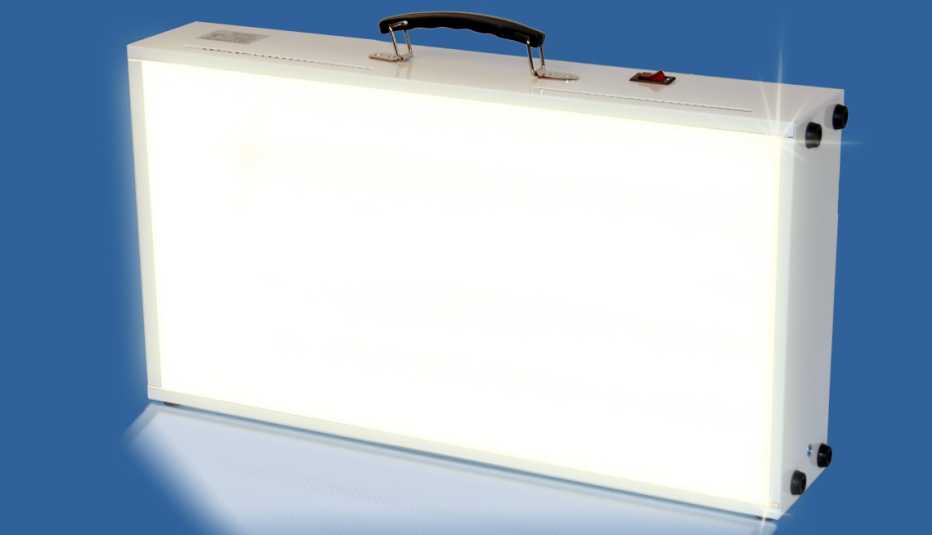Staying Fit
For residents of colder and darker climates, it can be challenging to get outside when the winter winds howl and the sun sets a few hours after lunchtime. While it’s easy to take refuge under the warmth of your bedsheets or the blankets on your couch, medical experts stress that daily exposure to sunlight is essential to maintain the body’s proper circadian rhythms. An absence of adequate daily light can affect moods by disrupting sleep patterns, proper dieting and daily exercise.


AARP Membership— $12 for your first year when you sign up for Automatic Renewal
Get instant access to members-only products and hundreds of discounts, a free second membership, and a subscription to AARP the Magazine.
There are some products available to keep you from burrowing into hibernation. Some let more sunshine in your home, while others simulate the sun’s rays. The key, says Jamie Zeitzer, associate professor of psychiatry and behavioral sciences at the Stanford Center for Sleep Medicine, is to buy a product that takes little effort to use on a daily basis.
Daylight bulbs. Brands such as Philips and Sylvania now market everyday light bulbs designed to mimic natural light better than standard bulbs. The secret: more blue in the light spectrum. In comparison, soft-white bulbs are more yellow; bright-white bulbs, more ... white. Daylight bulbs are rather bright and have become popular for kitchens and bathrooms.
Tubular skylights. Cheaper, smaller and easier to install than a traditional skylight, tubular skylights use a light-collecting dome on your roof and a reflective tube to funnel sunlight into rooms. While professional installation is advised — you have to cut precise holes in the roof and ceiling — tubular skylights deliver natural light that no light bulb can. “If you’re in a really well-lit doctor’s office, that’s around 500 lux [a measurement of light],” Zeitzer says. “If you go outside in New York City on an overcast day, you’re looking at 10,000 lux.” Light is orders of magnitude greater when from a natural source.
Mimicking the sunrise
Sunrise alarm clocks. Gradually brightening, starting at about 30 minutes before the alarm goes off, these gadgets mimic the sunrise. The generated light seeps through your eyelids and into your brain, much like the sun does on an early summer morning.
But Zeitzer advises that these products might be better gifts for dormant college students than their parents. “In young individuals, it helps you wake up a little bit easier,” Zeitzer says. “In older people, we find that it is actually kind of disruptive to the end-of-night’s sleep.”
Zeitzer says that as people get older, their ability to ignore the sunrise wanes, often causing them to get out of bed too early. “With a lot of retirees, one of the problems is that they’re getting too much light in the morning, and then they’re getting up too early.”


Light-therapy lamps and light boxes. These products provide high light levels, up to 10,000 lux — what you’d often get outside. Anyone can buy them, but they’re designed primarily for people with seasonal affective disorder (SAD), a mood-altering condition that affects about 5 percent of Americans. Doctors discourage light therapy without medical consultation.




































































